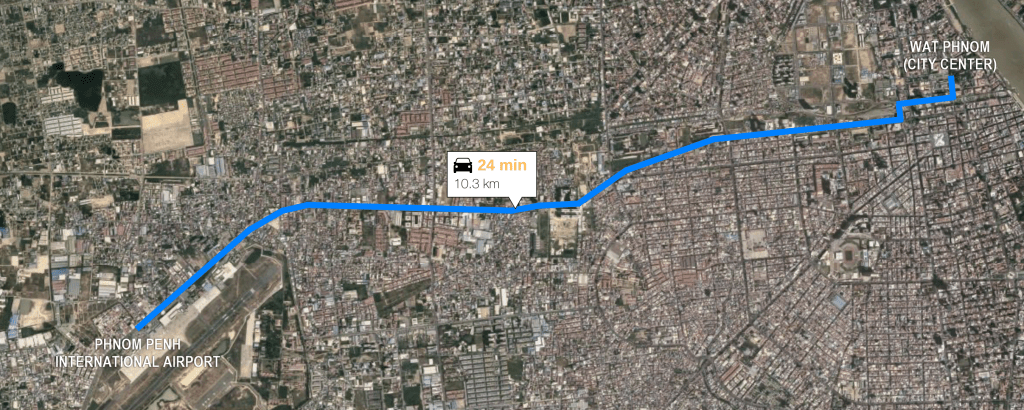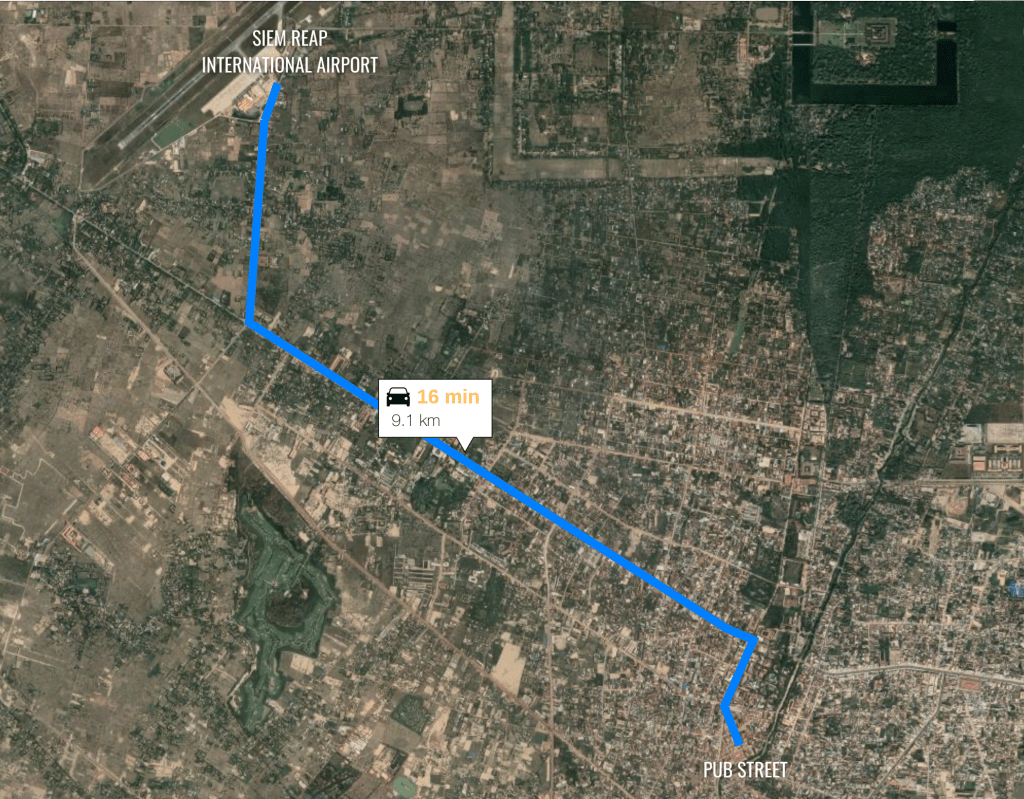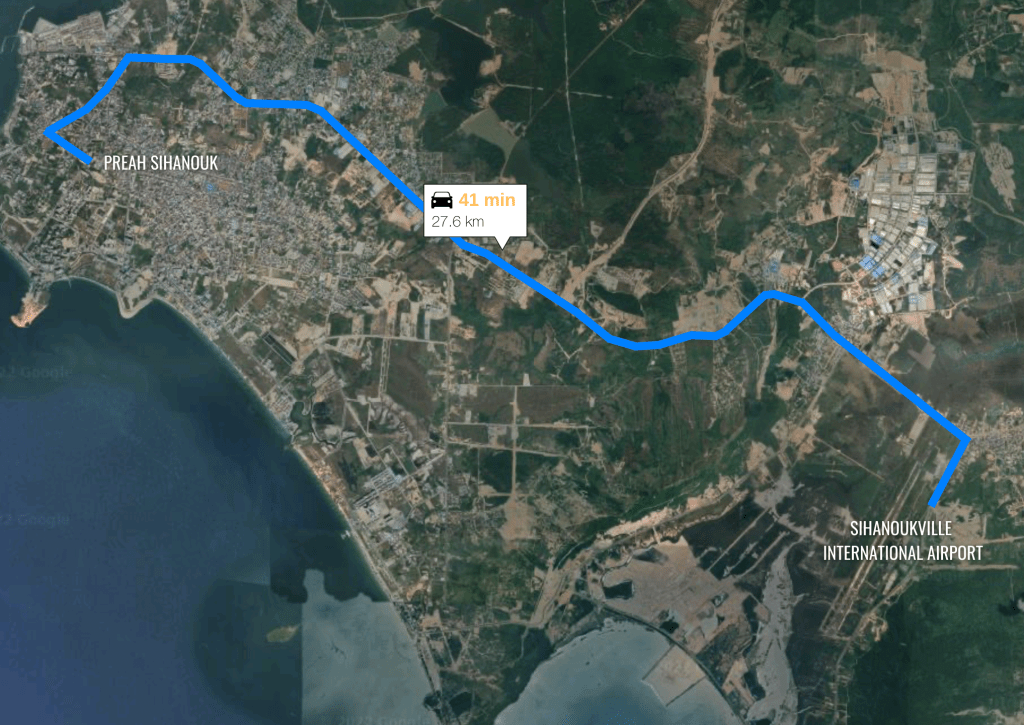Cambodia is divided into several provinces and cities, along with the tourist destinations within it. Its massive development on building national highways and main roads have made travelling around the country pretty much easier.
Foreigners either travel from one city to another or within the districts of the city. Whichever it is, everything is accessible through the modes of transportation in Cambodia.
Cambodia’s major cities offer various modes of public transportation, such as motorbikes and tuk-tuks. While traffic congestion and uneven roads can be challenging, tourists can enjoy a safe and comfortable travel experience by exercising caution and researching their transportation options.
By planning with the assistance of Cambodia’s Official Tourism Website, visitors can easily navigate the city and explore its vibrant culture and attractions.
GETTING FROM CITY TO CITY
By Airplane
Flights to Cambodia either land in Phnom Penh, Siem Reap, or Sihanoukville. There are domestic flights which can be booked going from one city to another within the country. However, these flights only originate from the major cities of Cambodia which leaves provinces inaccessible by air.
Domestic flights are operating daily for a quick way transfer between these cities. Below are the airlines that have direct flights in getting around the cities of Cambodia.
| FROM PHNOM PENH INTERNATIONAL AIRPORT (PNH) | AIRLINES |
| To Siem Reap, Cambodia (REP) | Cambodia Airways |
| “ | Cambodia Angkor Air |
| “ | Lanmei Airlines |
| To Sihanoukville, Cambodia (KOS) | Cambodia Airways |
| “ | Cambodia Angkor Air |
| “ | Lanmei Airlines |
| “ | JC International Airlines |
| FROM SIEM REAP INTERNATIONAL AIRPORT (REP) | AIRLINES |
| To Phnom Penh, Cambodia (PNH) | Cambodia Airways |
| “ | Cambodia Angkor Air |
| “ | Sky Angkor Airlines |
| “ | JC International Airlines |
| To Sihanoukville, Cambodia (KOS) | Cambodia Airways |
| “ | Cambodia Angkor Air |
| “ | Lanmei Airlines |
| “ | JC International Airlines |
| FROM SIHANOUKVILLE INTERNATIONAL AIRPORT (KOS) | AIRLINES |
| To Phnom Penh, Cambodia (PNH) | Cambodia Angkor Air |
| “ | JC International Airlines |
| To Siem Reap, Cambodia (REP) | Cambodia Airways |
| “ | Cambodia Angkor Air |
| “ | Lanmei Airlines |
By Bus
Bus transportation is the most convenient way to travel around the cities and provinces of Cambodia. Unlike airplanes, buses provide all local and regional routes. From getting to a remote area or traveling to a city, buses can get you around the country easily.
It also offers inter-city transportation services between districts of the city. For instance, landing from the airport, you can ride a bus going to the city center. Buses in Cambodia are either operated by the government or a private company, and all the details are available at Phnom Penh City Bus Routes and Timetables.
Buses are mostly equipped with aircon, TV, and Wi-Fi. Its daily operations run from 5:00 AM to 8:30 PM. If the distance of your journey is long, you can buy tickets from travel agencies and bus stations ahead of time. Meanwhile, if you have a short journey just within the city, you can catch buses from its designated bus stops.
Phnom Penh City Bus is a public transportation system of the municipality in Phnom Penh, Cambodia. It operates daily from 5:30 AM to 8:30 PM. There are 11 bus lines running throughout the city. Its bus service covers Ta Khmao (South), Prek Pnov (North), Chbar Ampov (East), and Special Economic Zone (West).
Regardless of the distance, public buses charge KHR 1,500 ($0.37 USD) per ride per person. There are no payments required for senior citizens, children below 1 meter height, disabled, students, monks, factory workers, and teachers. The travel free can only be availed once a proof of identity like student I.D is presented.
By Train
The Royal Railway line of Cambodia Railway Station provides train services in Cambodia, connecting major cities, including Phnom Penh, Sihanoukville, Battambang, and Pursat. The railway network spans 612 kilometers and operates daily on most routes, offering a comfortable and reasonably priced mode of transportation between cities.
The carriages are air-conditioned, with ample seating space. Tickets can be purchased at railway stations or through the Royal Railway website. However, it is important to be aware that train schedules and routes can be subject to change, and delays may occur.
GETTING FROM AIRPORT TO THE CITY CENTER
Phnom Penh International Airport is approximately 10 to 15 kilometers from the city center. It may take 40 minutes to 1 hour travel time, depending on the traffic situation and your mode of transportation. The satellite image from Google shows the location of the airport (on the left) to the city proper (on the right).
Wat Phnom is the point of the main city for it is located in a highly commercialized area in Phnom Penh. It is surrounded by hotels, guesthouses, offices, schools, markets, restaurants, and shopping malls. The fastest route is passing through Russian Federation Blvd.

Siem Reap International Airport is approximately 9 kilometers from the city center. It may only take 15 to 20 minutes travel time, depending on the traffic situation and your mode of transportation. The satellite image from Google shows the location of the airport (on the left) to the city proper (on the right).
Pub Street is located in the middle of the city of Siem Reap. It is surrounded by numerous hotels, villas, guesthouses, restaurants, and many kinds of shops. The fastest route is going through the straight stretch of National Road 6.

Sihanoukville International Airport is approximately 28 kilometers from the city center. Its travel time may take up to 50 minutes or more, depending on the traffic situation and your mode of transportation. The satellite image from Google shows the location of the airport (on the right) to the city proper (on the left).
Kampong Som is a coastal city and the capital of Sihanoukville Province. It is comprised of a long string of pristine beaches, unspoiled islands, and coastal marshlands. The fastest route is taking the National Road 4.

GETTING AROUND THE CITY
Remork

Remorks are vehicles with two-wheeled covered trailers attached to motorbikes. Its name originated from the french word “remorque” which means a platform or container with wheels being pulled by a vehicle.
This vehicle is often mistakenly called ‘tuk tuk.’ Thailand has influenced Cambodia in identifying the three-wheeled vehicles as tuk tuks. But officially, remorks are only found in Cambodia and are very different compared to tuk tuks.
Remorks are larger than any other motorcycle vehicles. Its trailer is fitted with two bench seats facing each other and an ample space in the middle. It can carry a maximum of six persons, along with luggage and other personal belongings.
Since remorks are slow in speed, it is definitely safer than any other modes of transportations in Cambodia. However, they are more expensive in price. It is best suited for families who are strolling around the city or those coming from the airports with big luggage.
Tuk Tuk

Tuk tuk is the modern and automatic form of rickshaw running on LPG. It is built with a metal body sitting on three wheels. Its body is divided into two small cabins for the moto driver and the passengers.
Historically, tuk tuk was a two-wheeled carriage pulled behind a motorcycle or popularly known today as ‘remork.’ Due to modernization, an automatic form of rickshaw was built and introduced in Cambodia. It is more fuel efficient than other public transportations consuming standard petrol or diesel.
Tuk tuks can comfortably seat up to three passengers. Its typical short ride can cost $1 USD or 4,000 KHR per ride.
Cyclo

Cyclo is another form of rickshaw which is driven by a bicycle. It is characterized by a two-wheeled seat with a canvas roof resting on a one-wheel bicycle. It is distinct among other transportations as cyclo drivers sit at the back of passengers.
Cyclo, pronounced as see-klo, came from the french word “cyclo-pousse” which means pedicab or cycle rickshaw. It has been on the scene of Cambodia since 1930. However, it is becoming rare due to the rise of more convenient transportations like tuk tuk. It can only be found in Phnom Penh, mainly concentrated on the Riverside or Orussey Market.
Its seat can only carry one passenger, with a driver pedaling behind the rear wheel. Manually driven, its speed is much slower than other motorcycle vehicles. It is only used for leisure, mostly for viewing the streets of the city.
Bicycle Rentals
Bicycle rentals are a cost-effective and eco-friendly way for tourists to explore Cambodia’s cities and countryside. Prices range from a few dollars to around $10 per day. To ensure safety, tourists should wear appropriate gear, be cautious when cycling on busy roads, and bring a map or GPS device to avoid getting lost.
Motodop

Motodops are motorbikes or motorcycles that act as taxis for its immediate ride response to passengers. It can ride one passenger behind the driver but locals can squeeze as many as three. Moto drivers usually wear helmets but rarely offer one to their passengers.
In Khmer, it is often called ‘moto’ which came from the French word “motocyclette.” It is the most rapid transportation that can get you to your destination within the town. The short journey for a motodop ride ranges from 1,500 Riel to $1.50 USD, depending on the distance.
Apart from hiring motodops, there is also an option to rent a motorbike and drive on your own. Renting and driving motorcycles under 125cc does not require a driving license. Beyond that, you will need to apply for a Cambodian driver’s license or an international driving license accepted in Cambodia.
A motorbike for rent can cost $4 to $7 per day or a dirt bike for $12 to $30 daily. As part of renting, you will need to leave your passport as a deposit. You will also need to secure your own padlock and helmet for safety and security.
Taxi

Taxis are car vehicles that offer a more comfortable and convenient ride. Unlike motorcycle public transportations, taxis are air-conditioned and provide more protection against smoke and other pollution.
They are not rampant in city centers due to the high-demand of motorcycle transportations. But, taxis have a dominant appearance outside hotels and international airports. They have actually outnumbered tuk tuks and remorks in the parking lot of the airport’s arrival area.
Boat/Ferry Services
Boat Transportation in Cambodia services are frequently used for travelling between cities or islands, specifically along the Mekong River or Tonle Sap Lake. These services offer a picturesque mode of transportation and are well-liked by tourists. Multiple companies operate boat and ferry services with varying schedules and fares. Popular routes include Phnom Penh to Siem Reap, Phnom Penh to Chau Doc in Vietnam, and Siem Reap to Battambang.
RIDE HAILING APPS
The ride-hailing mobile applications have emerged in Cambodia. In fact, it has been the most in demand transportation service within the major cities. There are a number of local and international players in this sector.
The major ride-hailing applications in Cambodia are Grab, TADA, PassApp, WeGo, and Zelo. These applications allow passengers to book rides through their mobiles going to their desired destination. It matches the passenger to the nearest driver in the area for quick ride response.
These applications are downloadable in your mobile’s application store. It is the most convenient, but more importantly the safest ride that can get you to your destination.
Boat/Ferry Services: Boat Transportation in Cambodia services are frequently used for travelling between cities or islands, specifically along the Mekong River or Tonle Sap Lake. These services offer a picturesque mode of transportation and are well-liked by tourists. Multiple companies operate boat and ferry services with varying schedules and fares. Popular routes include Phnom Penh to Siem Reap, Phnom Penh to Chau Doc in Vietnam, and Siem Reap to Battambang.
Important Tips While Using Public Transport in Cambodia
Tips for ensuring safety and security while using public transportation in Cambodia, such as avoiding scams or dealing with language barriers must also be taken care of. Some of the pointers to be addressed are –
- Accessibility: Information on how people with disabilities or special needs can use public transportation in Cambodia.
- Cultural Etiquette: Tips on cultural etiquette that tourists should follow while using public transportation in Cambodia, such as respecting local customs and practices.
- Environmental Impact: A discussion on the environmental impact of different modes of transportation in Cambodia and suggestions for eco-friendly travel options.
- Emergency Contacts: A list of emergency contact numbers or services that tourists can use in case of an emergency or if they need assistance while using public transportation in Cambodia.
- Discounts or Passes: Information on any discounts or special passes available for tourists, such as weekly or monthly passes, that can help save on transportation costs during their stay in Cambodia.

